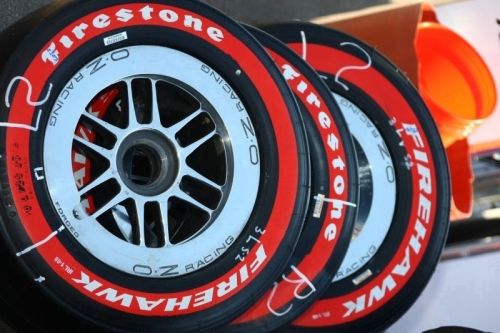How does qualifying work in IndyCar?
 Qualifying is a crucial part of every race weekend. In the IndyCar Series, overtaking is easier than in other racing categories, but securing a good starting position still provides a significant advantage.
Qualifying is a crucial part of every race weekend. In the IndyCar Series, overtaking is easier than in other racing categories, but securing a good starting position still provides a significant advantage.Unlike most other racing series, IndyCar does not have a single, fixed qualifying format. The method of qualifying depends on the type of circuit and, in some cases, the amount of available time. And then there's the Indianapolis 500, where everything is different from the norm.
Permanent and Street Circuits
IndyCar qualifying sessions on permanent and street circuits most closely resemble those in Formula 1: qualifying consists of three segments, with the battle for pole position taking place in the final segment. However, there are also significant differences.
Qualifying Consists of Three Segments
A key difference from Formula 1 is that in the first segment, the field is divided into two groups. This is due to the larger number of cars in the IndyCar field and the fact that races often take place on short, tight circuits.
These qualifying groups are based on the results of the last practice session. Drivers who finished in even-numbered positions in that session go into the first group, while those in odd-numbered positions go into the second group.
In the first segment, the fastest six drivers from each group advance to the second segment, leaving twelve drivers. In the second segment, the battle is to set a lap time among the top six, which grants access to the third segment: the Firestone Fast Six, where the fight for pole position takes place.

Tire Strategy
Tire strategy can be very interesting in these qualifying sessions. Each driver has four sets of faster red, alternate tires available during a race weekend. One of these sets is usually used in practice for a qualifying simulation, and one is typically saved for the race. This leaves drivers with two sets of tires for the three-segment qualifying session. Drivers do not receive an extra set of tires for the final battle for pole position.
A driver might gamble on getting through the first segment on the standard black tires, but this can backfire. In most cases, all drivers in the Firestone Fast Six will be on used tires, meaning the final lap times for pole position are slower than earlier laps.
Shortened Qualifying
There are times during race weekends when there isn’t enough time for such an extensive qualifying session—which can easily take an hour and 15 minutes. This often occurs during race weekends with two races or when the track is shared with another major racing series.
In this case, qualifying is straightforward: the field is once again divided into two groups (also based on the last practice session). Each group gets 15 minutes to set their fastest time, with the driver posting the fastest lap taking pole position. The fastest group then fills the odd-numbered positions on the grid, while the slower group takes the even-numbered positions.
Ovals, except the Indy 500
 On ovals, with the exception of the Indianapolis 500, qualifying is significantly simpler than on permanent and street circuits. During the qualifying session, each driver is allowed to make one qualifying run, which consists of two warm-up laps and two timed laps. The qualifying order is determined based on 'Entrant Points.' The driver who sets the fastest time over these two timed laps will start the race from pole position.
On ovals, with the exception of the Indianapolis 500, qualifying is significantly simpler than on permanent and street circuits. During the qualifying session, each driver is allowed to make one qualifying run, which consists of two warm-up laps and two timed laps. The qualifying order is determined based on 'Entrant Points.' The driver who sets the fastest time over these two timed laps will start the race from pole position.The qualifying order can be crucial. On ovals, weather conditions play a critical role in the handling of an IndyCar. Even having a cloud cover the sun can mean the difference between pole position and tenth place. For this reason, the order in which drivers qualify is determined by a random draw.
Shortened Qualifying During a Doubleheader Race Weekend
If there is limited time for qualifying, such as during a race weekend with two races, the qualifying session may be shortened. The qualifying format remains the same, with the exception that the first qualifying round counts for race one, and the second qualifying round counts for race two.
The Indy 500
For the Indy 500, an alternative qualifying procedure is used, with a full qualifying weekend taking place.
Read all about the qualifying procedure for the Indy 500
Canceled Qualifying
Sometimes a qualifying session has to be canceled due to rain, which can quickly happen on ovals. In this case, no bonus point for pole position will be awarded, and the race will start based on 'entrant points.' These are the points that a car has earned during the season. If a car is shared by two drivers during the season, the combined total of these drivers' points will count towards the 'entrant points.'
